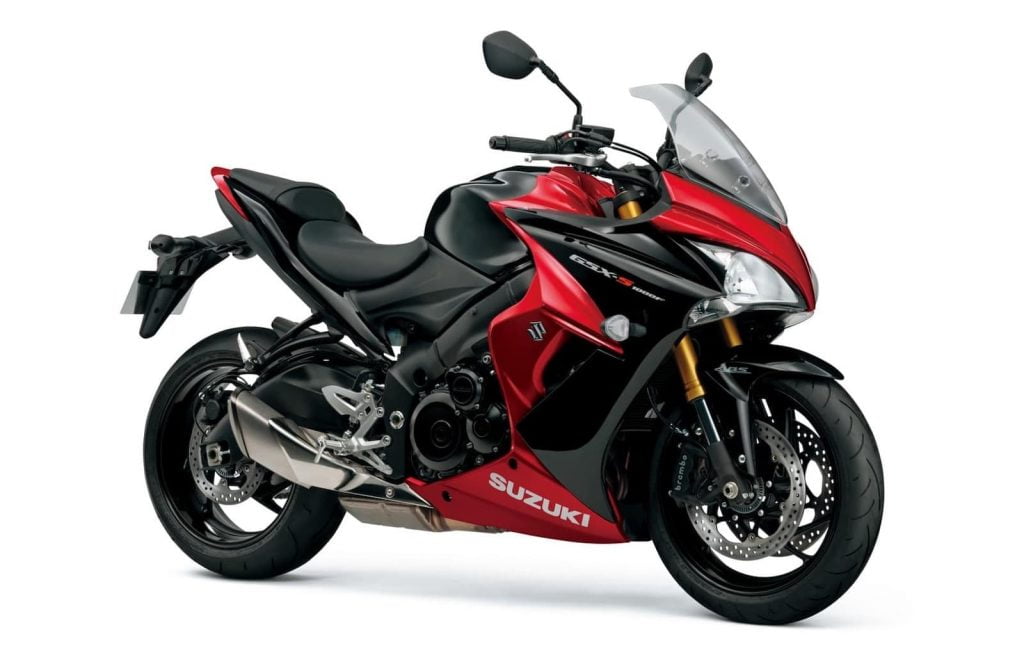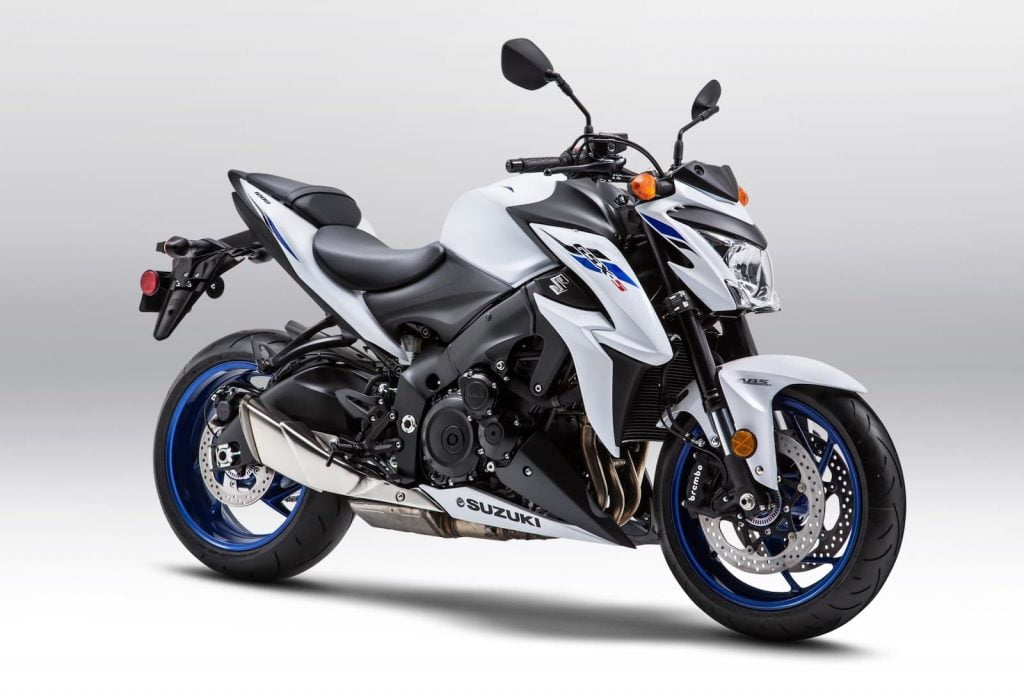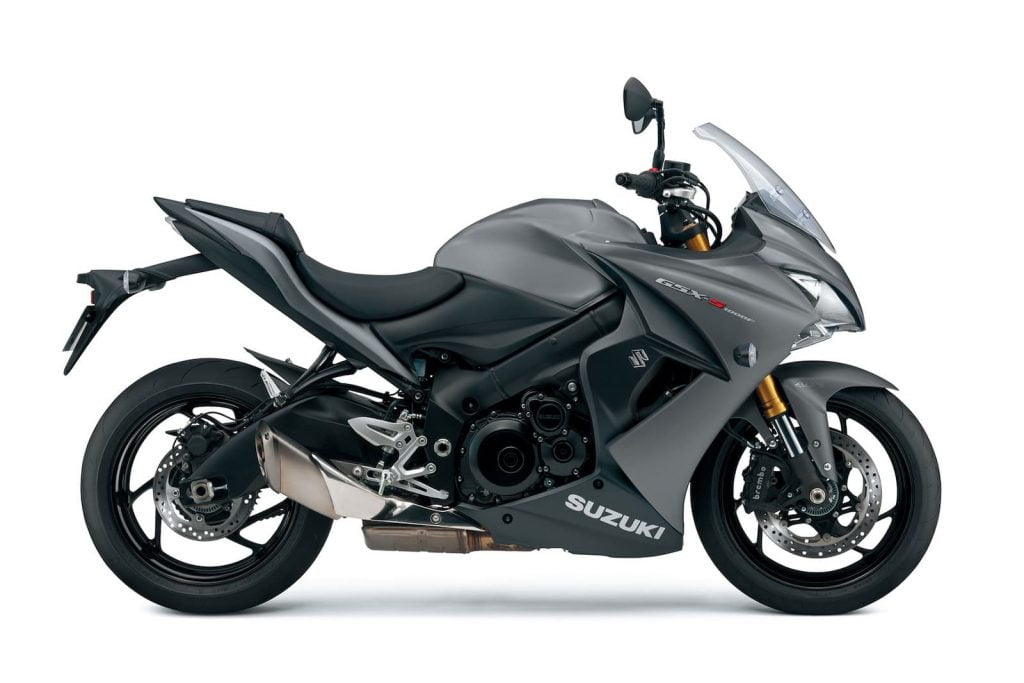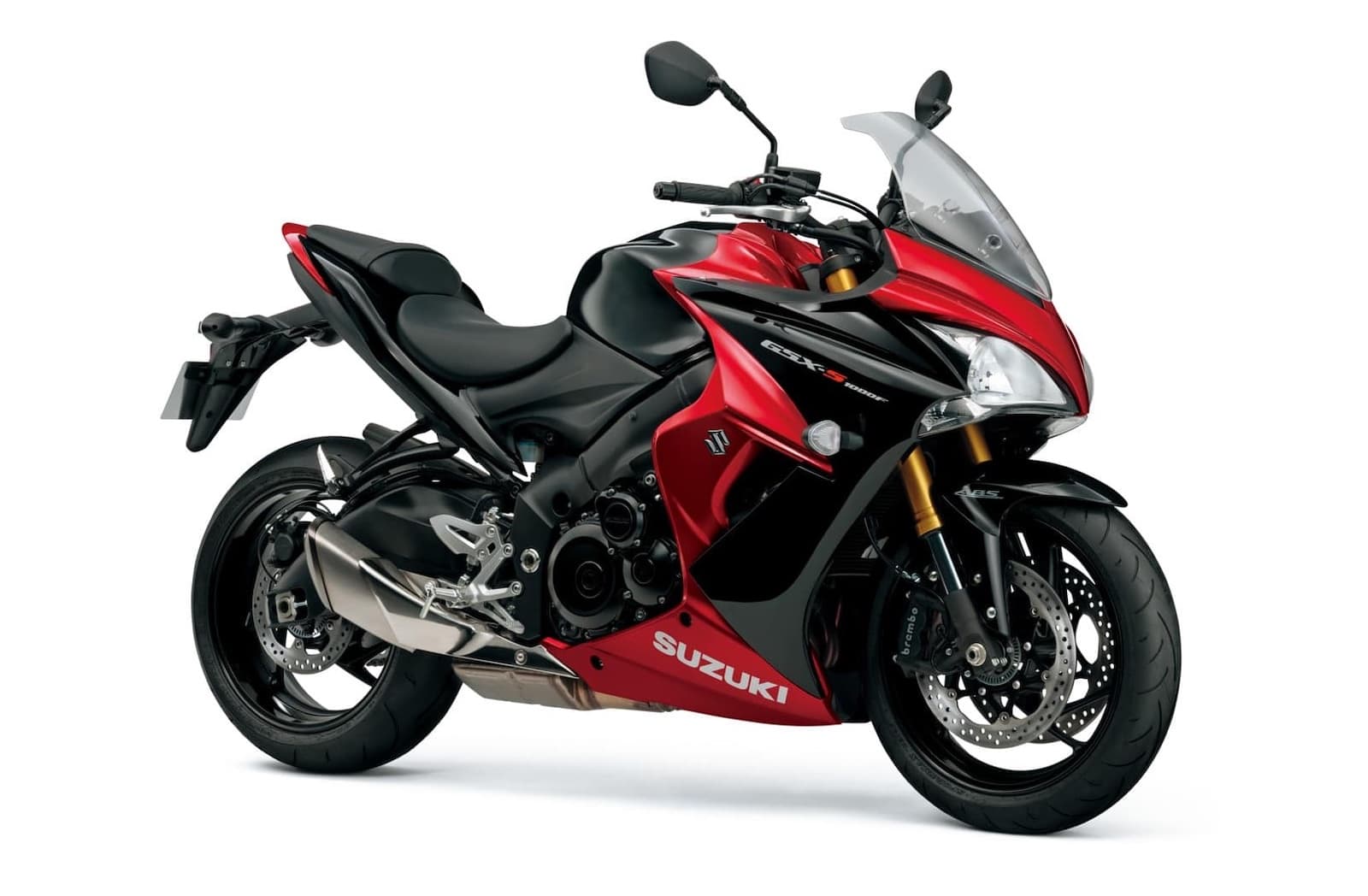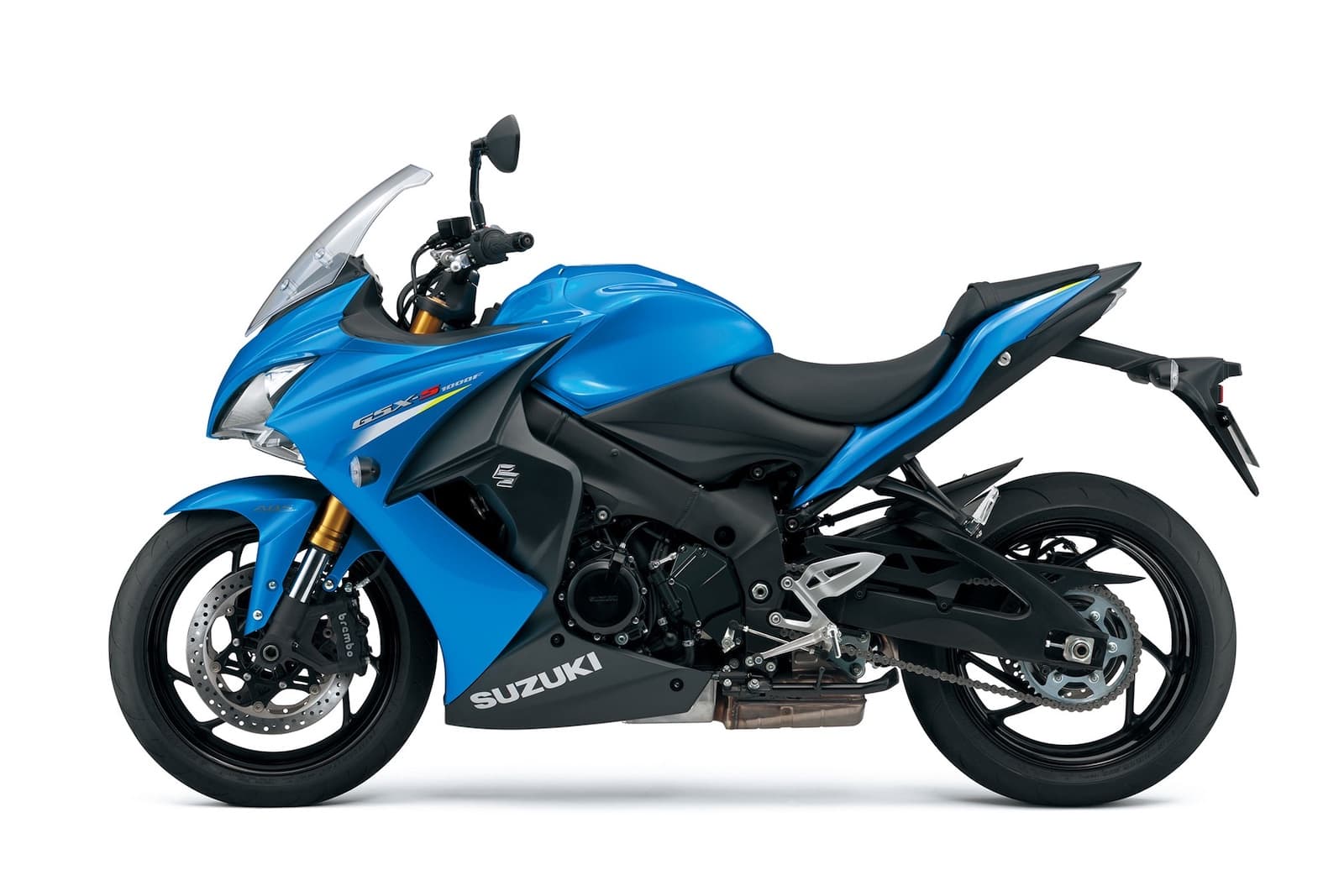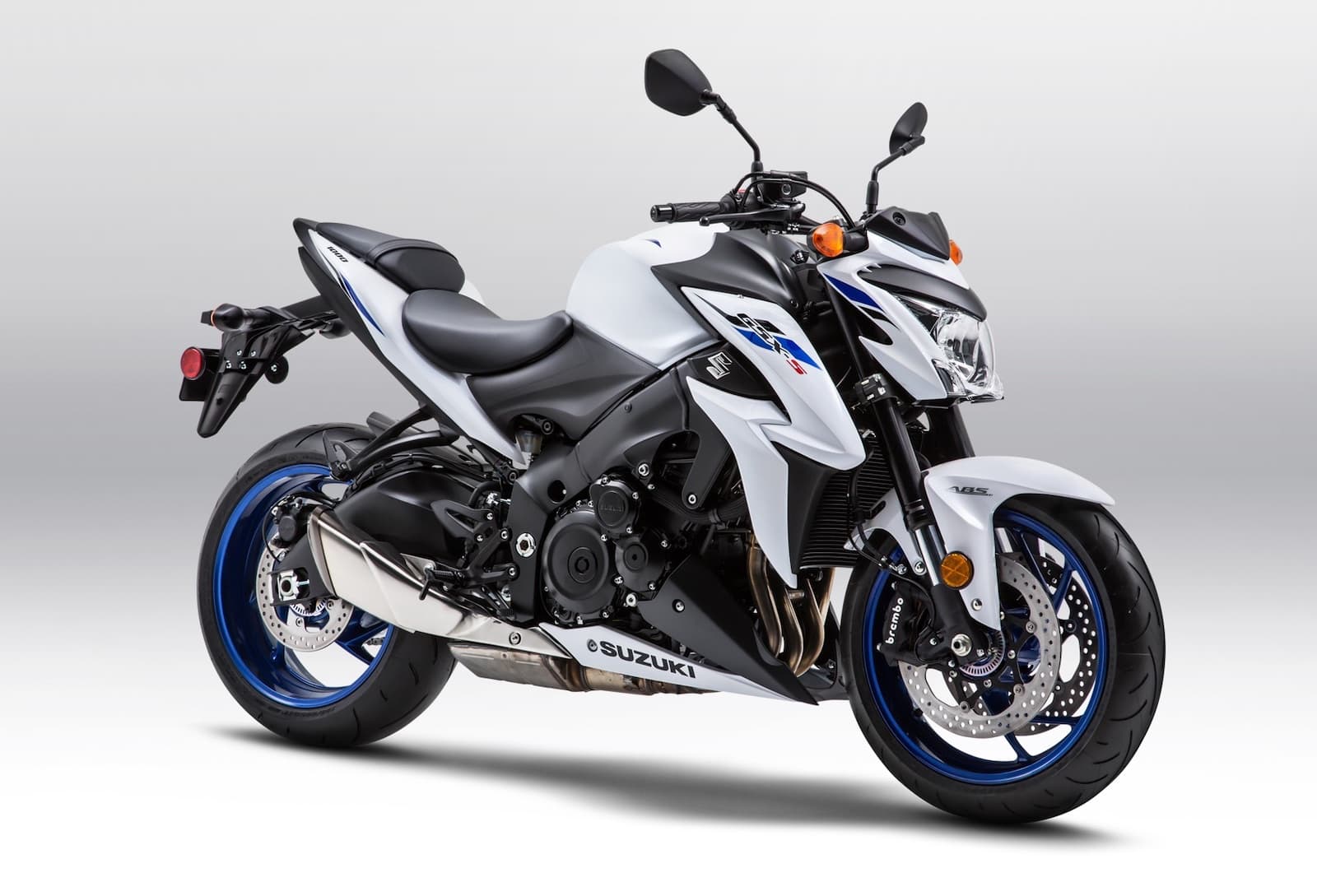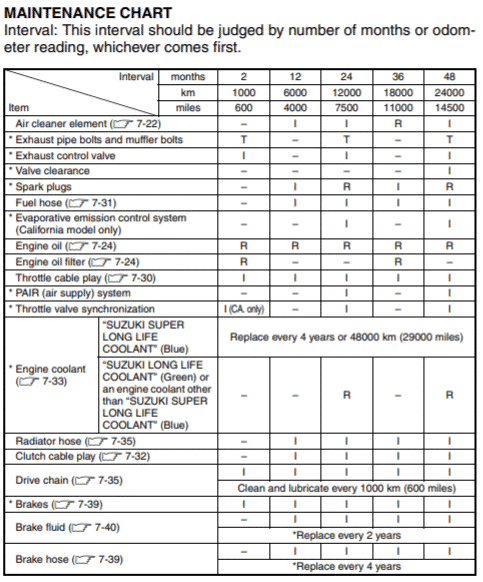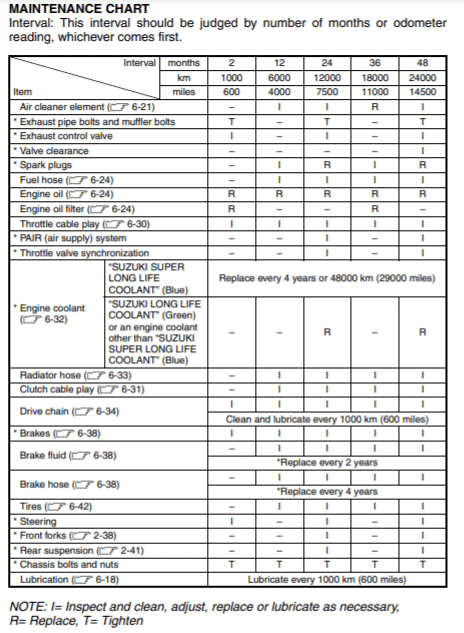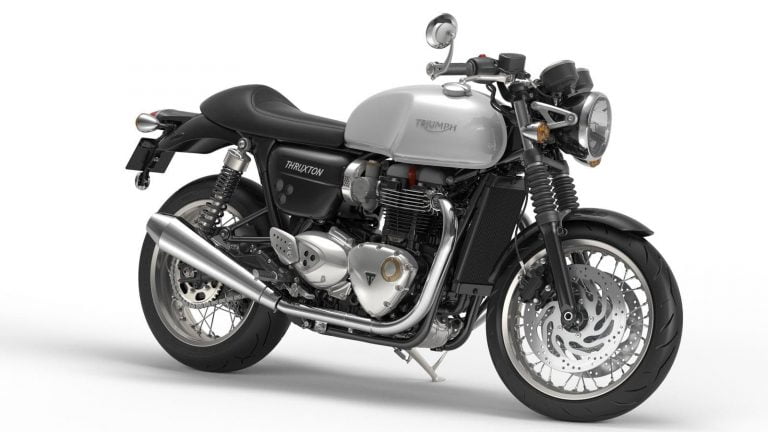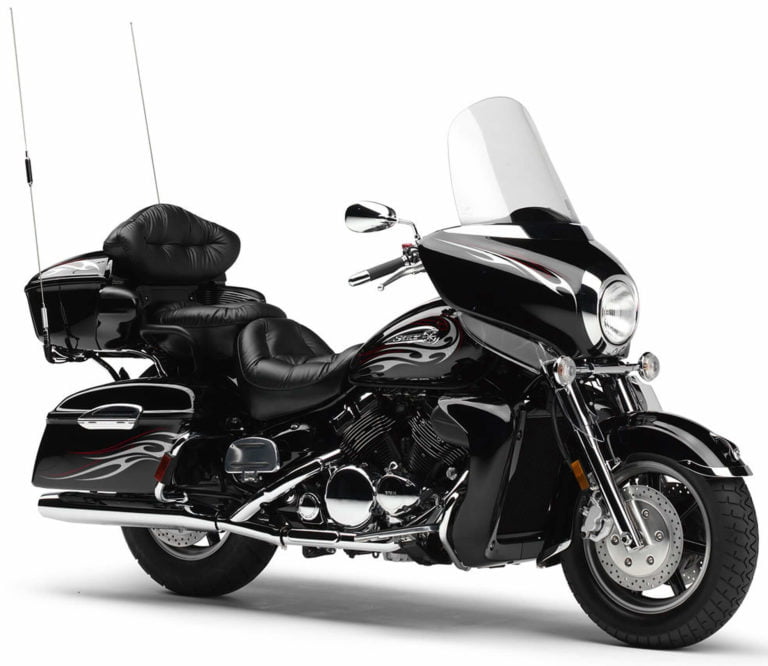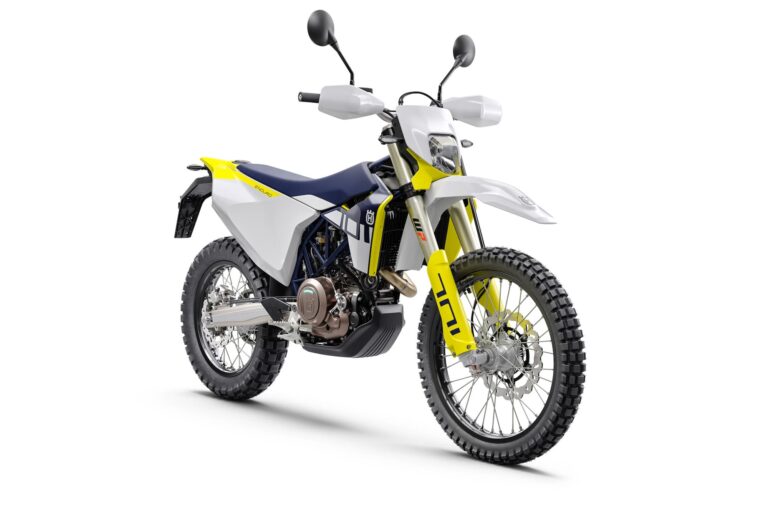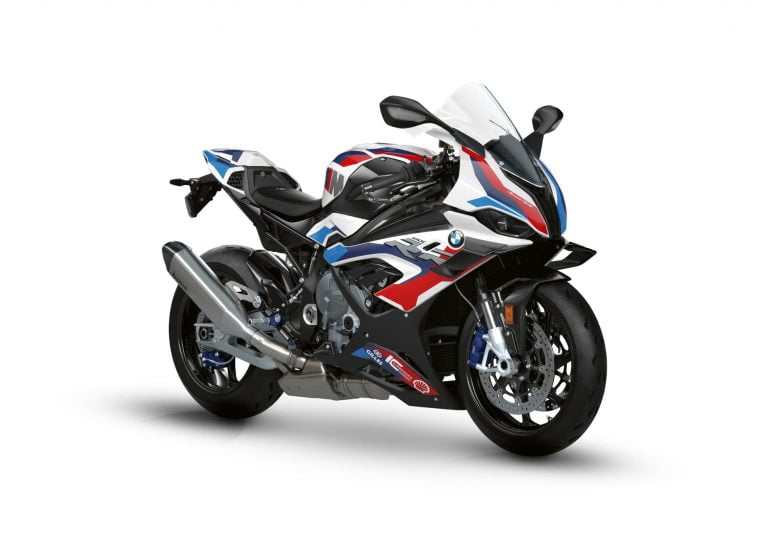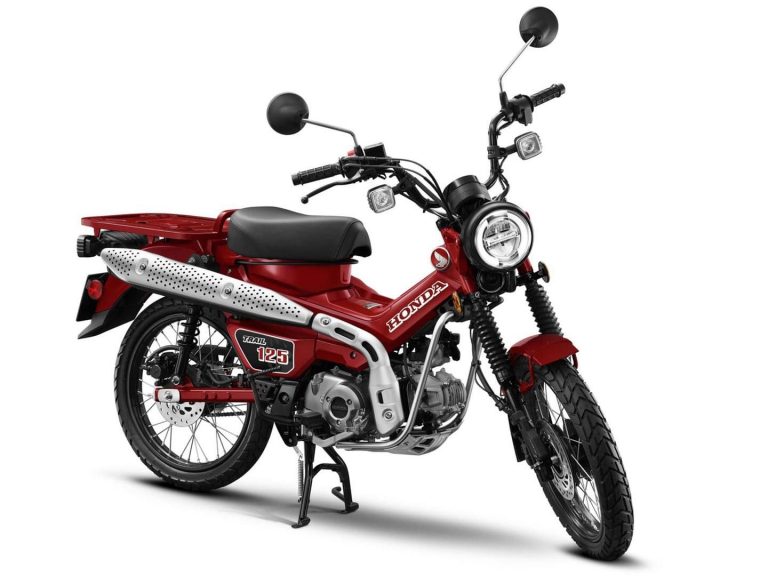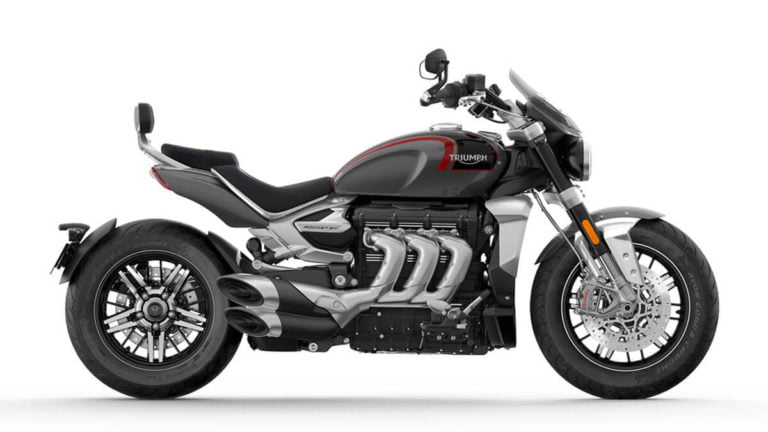Suzuki GSX-S1000/F (2016-2021) Maintenance Schedule and Service Intervals
This is the maintenance schedule and associated service intervals for the Suzuki GSX-S1000 made from 2016 to 2021.
This maintenance schedule applies to both the Suzuki GSX-S1000 and GSX-1000F — they’re essentially the same motorcycle, though the F version has fairings.
The Suzuki GSX-S1000 is a standard motorcycle from the Japanese manufacturer Suzuki that was launched in 2015. Its engine is essentially the K8 GSX-R1000 long-stroke motor with some re-tuning for even more torque in the mid-range. It’s also the bigger sibling to the mid-range Suzuki GSX-S750.
The GSX-S1000 is also available in faired version called GSX-S1000F, putting more emphasis on sport touring category as well as rivaling other naked liter-bike-derived sports tourer such as Kawasaki Ninja 1000 (the faired variant of Kawasaki Z1000 respectively). Although a lot of owners of the GSX-S1000F are pretty quick to point out: this is no sport-tourer!
The Suzuki Katana (a.k.a. the GSX-S1000S) has a similar maintenance schedule and service intervals, and a lot of overlapping parts.
This site has links for things like oil and spark plugs from which we earn a commission (which unfortunately nobody can save, not even us). If you appreciate this work, then please use those links. Thanks!
Suzuki GSX-S1000 / F Service Intervals
The Suzuki GSX-S1000 has 3500 mile or 6000 km OR 12-month service intervals, following the earlier of the two periods. At every service, change the oil and do a list of other basic checks for smooth operation, no leaks, and general lubrication levels.
The valve service interval for the GSX-S1000 is 14500 miles or 24000 km.
As the GSX-S1000 has a liquid-cooled engine, make sure you swap out the coolant periodically. If you’re using Suzuki long-life coolant, change it every four years — otherwise, every two.
What you need to service your Suzuki GSX-S1000 & GSX-S1000F
Below is a list of the things you’ll need to do a service on your GSX-S1000 and GSX-S1000F.
| Part | Suzuki GSX-S1000/F spec |
|---|---|
| Oil | Suzuki (like most motorcycle brands) requires engine oil with JASO MA spec, or at least API SF/SG or SH/SJ spec. Many oils fit this. Suzuki recommends SAE 10W-40 weight Suzuki motor oil, but I wouldn’t over-think this and use another popular high-grade oil like Motul 7100 10W-40. |
| Oil filter | Use a Hiflofiltro HF138RC, which is a drop-in high-quality replacement. |
| Air filter | Use a K&N air filter as a drop-in replacement, part number SU-9915. |
| Spark plugs | The standard spark plug is NGK CR9EIA9, an iridium plug. You need four. |
| Brake fluid/Clutch fluid | Suzuki (like most motorcycles) requires DOT 4 brake and clutch fluid. |
| Brake pads | Most people upgrade their brake pads to EBC ones for better performance (and they’re very affordable). Use EBC part codes FA447HH for the front (two pairs) and FA174HH for the rear (one pair). |
| Coolant | Suzuki recommends using “Suzuki super long life coolant“, or another ethylene glycol-based antifreeze compatible with an aluminium radiator. Motorex Coolant M3.0 is a good alternative (see here — alternatives to Suzuki Super Long Life Coolant) |
| Chain maintenance | Use either Motul chain paste or a complete Motul chain care kit for frequent chain servicing. |
| Grease | Always handy to have some lithium soap-based grease for external pivot points, like the kickstand. |
Suzuki GSX-S1000 Maintenance Schedule
Below is the maintenance schedule for the Suzuki GSX-S1000. Observe the first of the distance or time intervals.
Notes:
- Legend:
- I= Inspect and clean, adjust, replace or lubricate as necessary.
- R= Replace
- T= Tighten
- Coolant — If using super long-life kind, replace every four years or 48,000 km; otherwise, replace every two years or 24,000 km.
- Since this bike has been superseded, the break-in schedule isn’t shown below.
- At the end of the maintenance schedule, repeat it in the pattern shown.
| km x 1000 | 6 | 12 | 18 | 24 | |
|---|---|---|---|---|---|
| mi x 1000 | 4 | 7.5 | 11 | 14.5 | Every |
| Inspection checklist (see below) — Inspect all items | ✓ | ✓ | ✓ | ✓ | Year |
| Engine oil (High-grade synthetic Mobil 1 10W-40) | ✓ | ✓ | ✓ | ✓ | Year |
| Engine oil filter (HF138RC) | ✓ | 3 years | |||
| Air cleaner element — Replace (K&N SU-9915) | ✓ | ||||
| Spark plugs — Inspect | ✓ | ✓ | |||
| Spark plugs — Replace (CR9EIA9) | ✓ | ✓ | |||
| Valve clearances — Inspect / Adjust | ✓ | ||||
| Exhaust pipe bolts and muffler bolts — Tighten | ✓ | ✓ | |||
| Exhaust control valve — Inspect | ✓ | ✓ | |||
| Evaporative emission control system (CA model only) | ✓ | ✓ | |||
| PAIR (air supply) system | ✓ | ✓ | |||
| Throttle valve synchronization | ✓ | ✓ | |||
| Steering head bearings — Inspect | ✓ | ✓ | |||
| Front forks — Inspect for smooth operation, no damage | ✓ | ✓ | |||
| Rear suspension — Inspect for smooth operation, no damage | ✓ | ✓ | |||
| Brake fluid — Replace (Castrol DOT 4) | 2 years | ||||
| Brake hoses — Replace | 4 years | ||||
| Engine coolant — Replace (Super long life, e.g. Motorex Coolant M3.0) | ✓ | 4 years | |||
| Lubrication (Lithium soap-based grease) | Lubricate every 1000 km (600 miles) |
Annual Inspection checklist
Below is the annual inspection checklist for the GSX-S1000 / F.
| Suzuki GSX-S1000 Inspection Checklist |
|---|
| Air cleaner |
| Throttle cable play |
| Fuel hose |
| Radiator hose |
| Clutch cable play |
| Drive Chain (Motul chain care kit) — Inspect condition Clean and lubricate every 1,000 km (600 miles) |
| Brakes — Inspect function |
| Brake fluid — Inspect level |
| Brake hoses — Inspect condition |
| Tires — Inspect pressure, condition, and wear |
| Chassis bolts and nuts — Tighten |
Tyre size and tyre pressure for the Suzuki GSX-S1000
The manual for the GSX-S1000 (and GSX-1000F) specifies the following tyre sizes, pressures, and suggested brands (which many are quick to replace).
| Tyre | Size | Tyre pressure (cold) | Brand(s) shipped with |
|---|---|---|---|
| Front | 120/70 ZR17 58W | 36 psi/250 kPa | DUNLOP D214F M |
| Rear | 190/50ZR17 73W | 42 psi/290 kPa | DUNLOP D214 M |
Maintaining your Chain on your Suzuki GSX-S1000
Maintain your chain regularly on the Suzuki GSX-S1000 and GSX-S1000F. They’re everyday sport bikes, so likely to see a variety of conditions, including wet weather.
Either use a good-quality (and affordable) chain lube like Motul Chain Paste, or use a full Motul Chain Care Kit to clean and restore a chain.
Suzuki recommends that you maintain your chain regularly according to the following schedule.
| Chain maintenance item | Every |
|---|---|
| Check chain * Correct tension / slack (20-30mm / 0.8-1.2 in at loosest point) * Adequate lubrication * No excessive wear / damage | Ride (pre-ride check) |
| Clean and lubricate chain | 1000 km / 600 miles |
Damage includes loose pins, damaged rollers, dry or rusted links, kinked or binding links, excessive wear, and improper adjustment.
Checking chain slack
To check the slack on the GSX-S1000 / F, put the motorcycle in neutral, onto its kickstand, and on a level surface.
Check the slack on the lower part of the chain, midway between the sprockets, and check it in multiple places (move the motorcycle forwards and backwards) as chains wear unevenly.
Slack on the GSX-S1000 is defined as the free vertical movement of the chain.
Target chain slack for the GSX-S1000 and GSX-S1000F: 20 – 30 mm (0.8 – 1.2 in)
If the chain slack is out of spec, you need to adjust it.

Adjusting chain slack
To adjust the chain slack on the GSX-S1000 and GSX-S1000F, follow the steps below. As with measuring chain slack, make sure that the motorcycle is on a level surface on its kickstand, in neutral, with no weight on it (no saddlebags / luggage).
- Loosen the rear axle and the lock nuts on both sides of the axle.
- Turn the adjuster nuts to tighten (or loosen) the chain. Keep checking the chain tension to see if it has come within spec.
- Keep an eye on the adjuster alignment marks on either side of the axle. Make sure that the adjustment is to the same point.
- When you’re done, tighten the axle to 100 Nm / 72.5 lb-ft.
- Re-check the chain slack again to make sure it’s still within spec.
About the Suzuki GSX-S1000 & GSX-S1000F
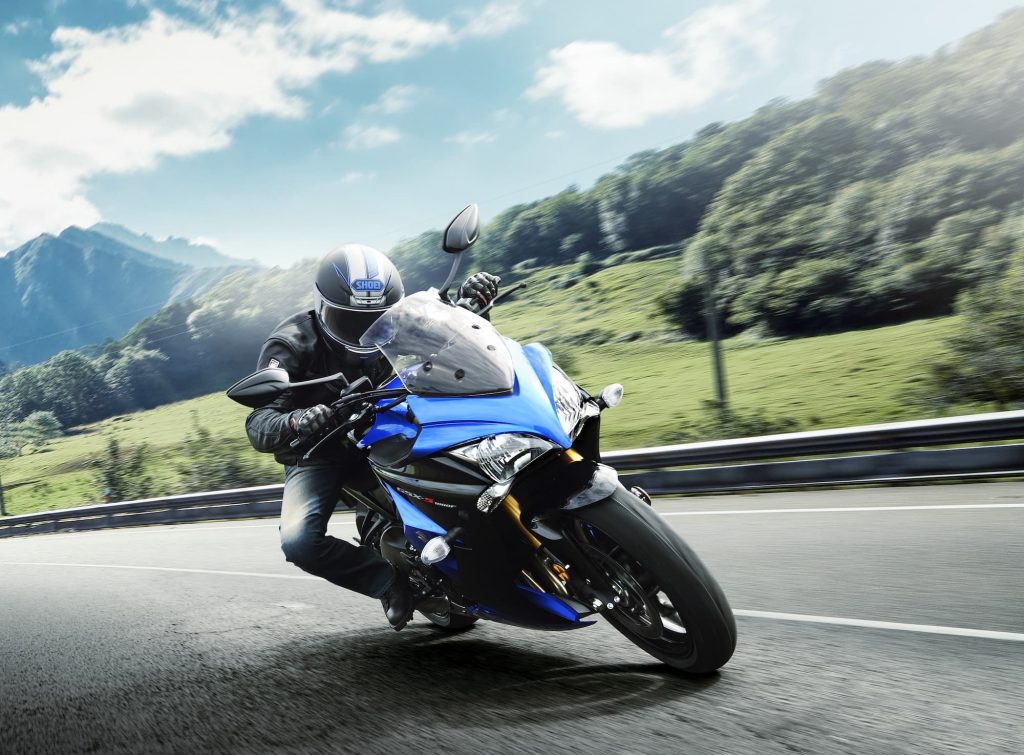
The Suzuki GSX-S1000F is an accessible sport bike or sport tourer — taking the raw energy of the K5-8 GSX-R1000, making it more comfortable, adding some safety features, and putting a bit more oomph in the mid-range rather than the top end (which most people never access on the street).
In theory, the Suzuki GSX-1000F takes over from the Bandit line, most notably the Bandit 1250 and the GSX1250FA.
The Gixxer-based engine is an inline four with a 12.2-1 compression ratio. It still has 999cc total displacement — unlike Kawasaki, Suzuki likes to rely on tuning to improve mid-range torque, rather than bumping up displacement. The engine is DOHC, liquid-cooled, and fuel-injected of course.
The fuelling for the GSX-S1000F is through dual throttle valve 44mm throttle bodies, and power is put to the ground through a 6-speed transmission and a chain drive. How much power? The original GSX-S1000F puts out 110 kW or 145 hp at 11,500 rpm at the rear wheel. Torque is also a similarly stupendous 105 Nm (78 lb-ft) @ 9,500 rpm at the rear wheel. It’s a lot of torque, and a lot of power, and a lot of fun to ride.
The GSX-S1000F was updated in 2018 to slightly higher power and torque figures — 108 Nm (80 lb-ft) @ 9,500 rpm, and 113 kW (150 hp) @ 11,300 rpm. Both those figures are higher and slightly lower in the power band.
Suspension is pretty impressive on the GSX-S1000F considering it’s not a “true” sports motorcycle. Or is it? The GSX-S has a fully-adjustable inverted 43mm KYB inverted fork, and a preload and rebound adjustable link-type KYB shock at the rear. Very impressive.
Braking is also impressive for the Katana, with dual 310mm discs and Brembo monoblock 4-piston calipers.
In 2021, Suzuki announced the new 2022 Suzuki GSX-S1000 and GSX-S1000F model with updated styling (stacked headlights in the naked, horizontal LEDs in the GT) and significantly updated electronics, including ride-by-wire and a host of associated features (but no cruise control in the naked version, nor IMU-assisted traction control/ABS in either).
Manual for the Suzuki GSX-S1000
The above maintenance schedule comes directly from the user’s manual for the 2018 Suzuki GSX-S1000. It’s the same as for other years, as seen in the other screenshot.
You can download it from Suzuki’s official website here.
